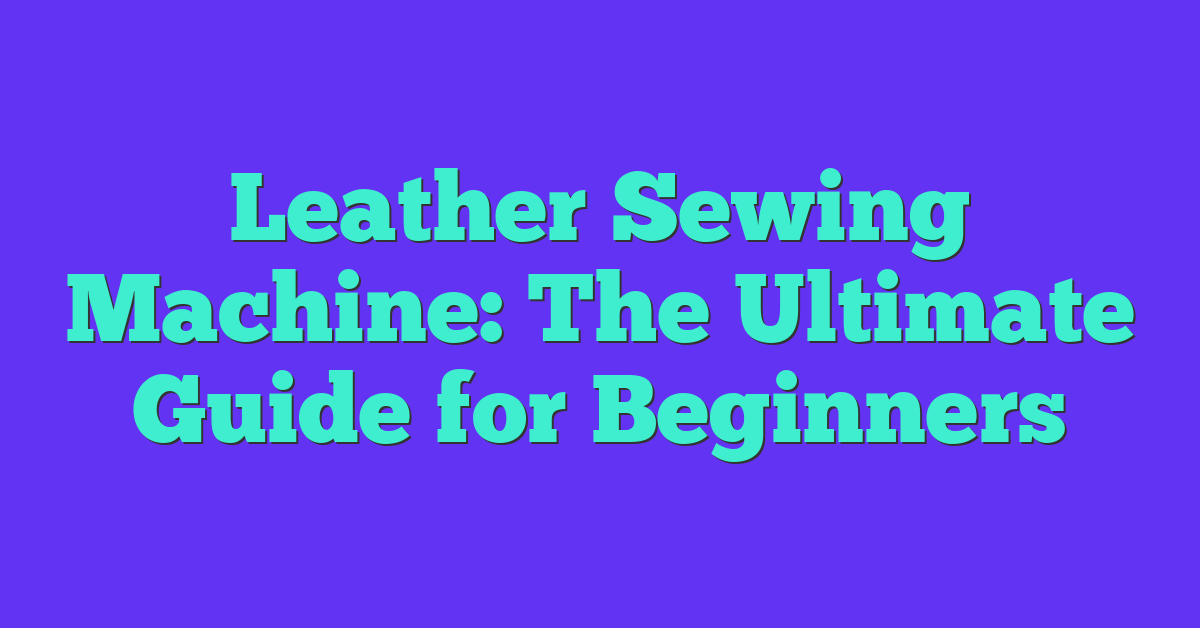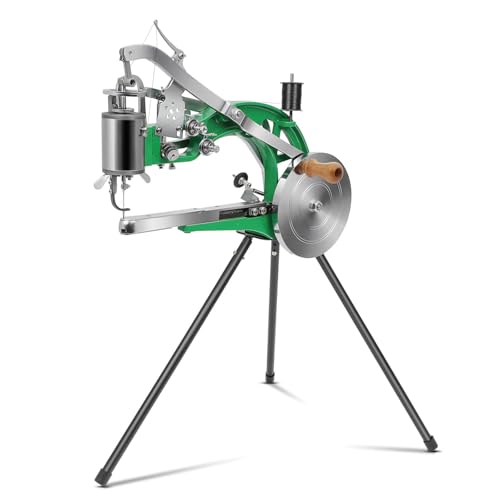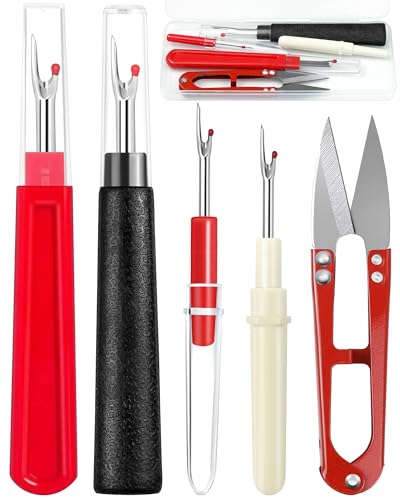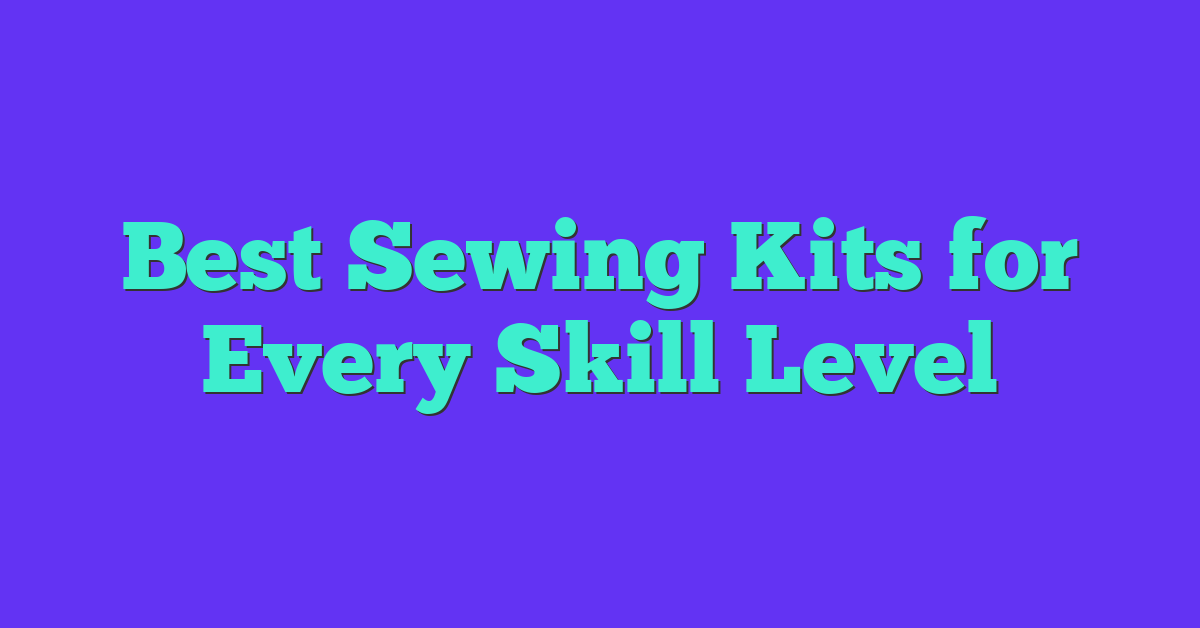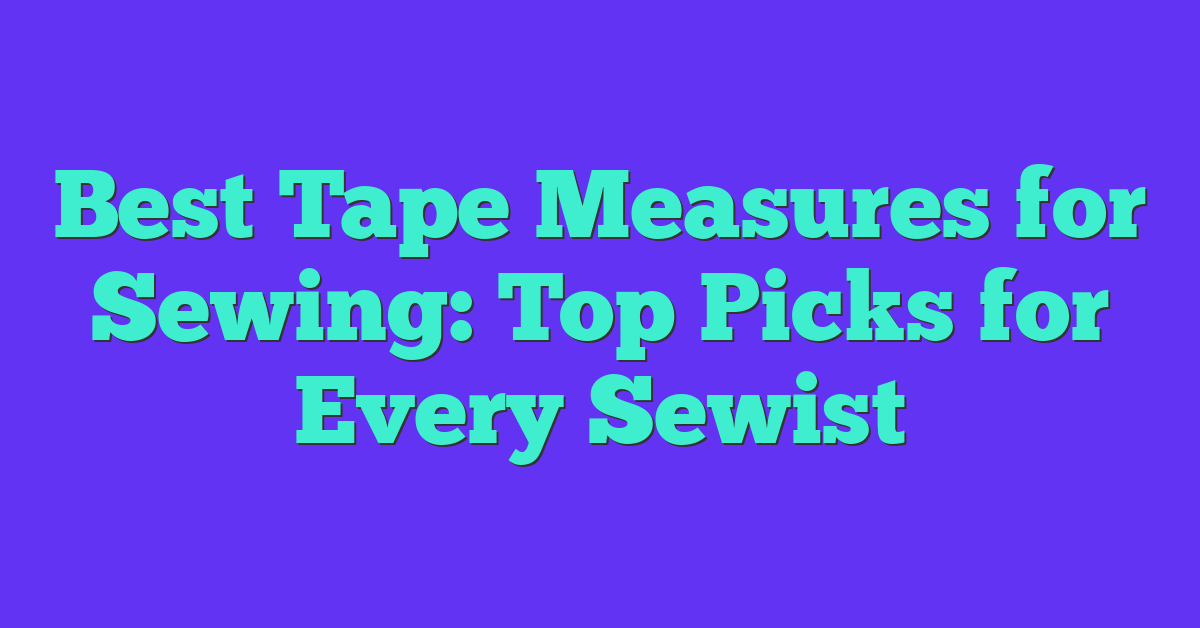As a leather crafting enthusiast, I know that sewing leather can be a challenging task. However, with the right tool, it can be a breeze. That’s where the leather sewing machine comes in. A leather sewing machine is a specialized sewing machine that is designed to handle the unique properties of leather. It is a must-have tool for anyone who works with leather, whether you are a professional leather worker or a hobbyist.
Understanding Leather Sewing Machines is crucial to choosing the right one for your needs. Leather sewing machines come in different types, each with its own unique features and capabilities. Some are designed for light-duty work, while others are built to handle heavy-duty projects. Some machines are manual, while others are powered by electricity. It is essential to know what you are looking for to get the most out of your leather sewing machine.
Understanding Leather Sewing Machines
As someone who loves working with leather, I’ve learned a lot about the different types of sewing machines available and how they work. In this section, I’ll share some of that knowledge with you so you can choose the right sewing machine for your leather projects.
Types of Leather Sewing Machines
There are two main types of leather sewing machines: domestic and industrial. Domestic sewing machines are designed for home use and are typically less expensive and less powerful than industrial machines. They’re great for small projects like wallets and belts, but may struggle with thicker or tougher leather.
Industrial sewing machines, on the other hand, are designed for heavy-duty use and can handle even the thickest and toughest leather. They’re more expensive than domestic machines, but if you’re serious about leatherworking, they’re worth the investment.
Within these two categories, there are also different types of machines. For example, some machines are designed specifically for stitching leather, while others can handle a variety of materials. There are also heavy-duty portable machines that are great for taking to craft fairs or other events.
Features to Look For
When choosing a leather sewing machine, there are several features to consider:
- Stitch length: Look for a machine that can handle both short and long stitches, as this will give you more flexibility in your projects.
- Needle size: Make sure the machine can handle the needle size you need for your particular leather thickness.
- Motor power: Industrial machines typically have more powerful motors, which means they can handle thicker and tougher leather.
- Thread capacity: Look for a machine that can handle larger thread spools, as this will save you time and hassle.
- Feed mechanism: Some machines have a walking foot, which helps feed the leather through evenly and prevents slipping.
Conclusion
Choosing the right leather sewing machine is important if you want to create high-quality leather products. Consider your budget, the types of projects you’ll be working on, and the features you need when making your decision. With the right machine, you’ll be able to create beautiful and durable leather goods that will last for years to come.
Choosing the Right Leather Sewing Machine
When it comes to choosing the right leather sewing machine, there are several factors that you need to consider. As someone who has been sewing leather for years, I have learned a thing or two about what makes a good leather sewing machine. Here are some things to keep in mind:
Price
Leather sewing machines can range from a few hundred dollars to several thousand dollars. The price you pay will depend on the features you need and the quality of the machine. If you are just starting out, you may want to consider an entry-level machine that is more affordable. As you gain more experience and start working on more complex projects, you may want to invest in a higher-end machine.
Experience
Your level of experience will also play a role in choosing the right leather sewing machine. If you are just starting out, you may want to choose a machine that is easy to operate and has fewer features. As you become more experienced, you may want to choose a machine that has more advanced features and can handle more complex projects.
Customer Support
When choosing a leather sewing machine, it’s important to consider the level of customer support that is available. You want to choose a machine from a company that offers excellent customer support and is responsive to your needs. This will ensure that you have a positive experience and can get help if you run into any issues.
Operation
The operation of a leather sewing machine is also an important factor to consider. You want to choose a machine that is easy to operate and has clear instructions. You also want to choose a machine that is durable and can handle the wear and tear of regular use.
In conclusion, choosing the right leather sewing machine requires careful consideration of several factors, including price, experience, customer support, and operation. By taking the time to research and choose the right machine, you can ensure that you have a positive sewing experience and can create high-quality leather projects.

Top Leather Sewing Machine Brands
When it comes to sewing leather, having the right machine is crucial. There are several brands of sewing machines that are known for their ability to handle leather with ease. Here are some of the top brands to consider when looking for a leather sewing machine:
Sailrite
Sailrite is a brand that is well-known for its heavy-duty sewing machines. Their machines are designed to handle tough materials like leather, canvas, and denim. The Sailrite LSZ-1 is a popular choice for sewing leather, as it has a powerful motor and a walking foot that can handle thick layers of leather.
Janome HD3000
The Janome HD3000 is another popular choice for sewing leather. This machine is designed for heavy-duty use and has a sturdy metal frame that can handle the weight of leather. It has a built-in needle threader and a drop-in bobbin system that makes it easy to use.
Brother ST371HD
The Brother ST371HD is a versatile machine that can handle a variety of fabrics, including leather. It has a metal needle plate that can handle thicker fabrics and a drop feed system that allows for free-motion quilting and sewing. It also has a built-in needle threader and a jam-resistant top drop-in bobbin.
Singer 4423
The Singer 4423 is a heavy-duty machine that can handle leather with ease. It has a strong motor and a metal frame that can handle the weight of leather. It also has a high sewing speed of 1,100 stitches per minute, which makes it a great choice for large projects.
Juki TL-2010Q
« Monogram Sewing Machine: A Guide to Choosing the Best One for You
Sewing Machine for Making Clothes: The Ultimate Guide »
The Juki TL-2010Q is a high-performance machine that is designed for quilting and sewing. It has a large work area and a powerful motor that can handle thick layers of leather. It also has a walking foot and a needle up/down function that makes it easy to pivot and turn corners.
Singer Quantum Stylist 9960
The Singer Quantum Stylist 9960 is a versatile machine that can handle a variety of fabrics, including leather. It has a built-in needle threader and a drop-in bobbin system that makes it easy to use. It also has a wide range of stitches and a high sewing speed of 850 stitches per minute.
Overall, these are some of the top brands to consider when looking for a leather sewing machine. Each brand has its own unique features and benefits, so it’s important to choose the one that best fits your needs and budget.
Features to Look for in a Leather Sewing Machine
When looking for a leather sewing machine, there are several features that you should consider to ensure that you get the best machine for your needs. Here are some of the most important features to look for:
Thread
One of the most important features to look for in a leather sewing machine is the ability to use heavy-duty thread. Leather is a tough material, and it requires a heavy-duty thread to hold it together. Look for a machine that can handle thread sizes of at least 138.
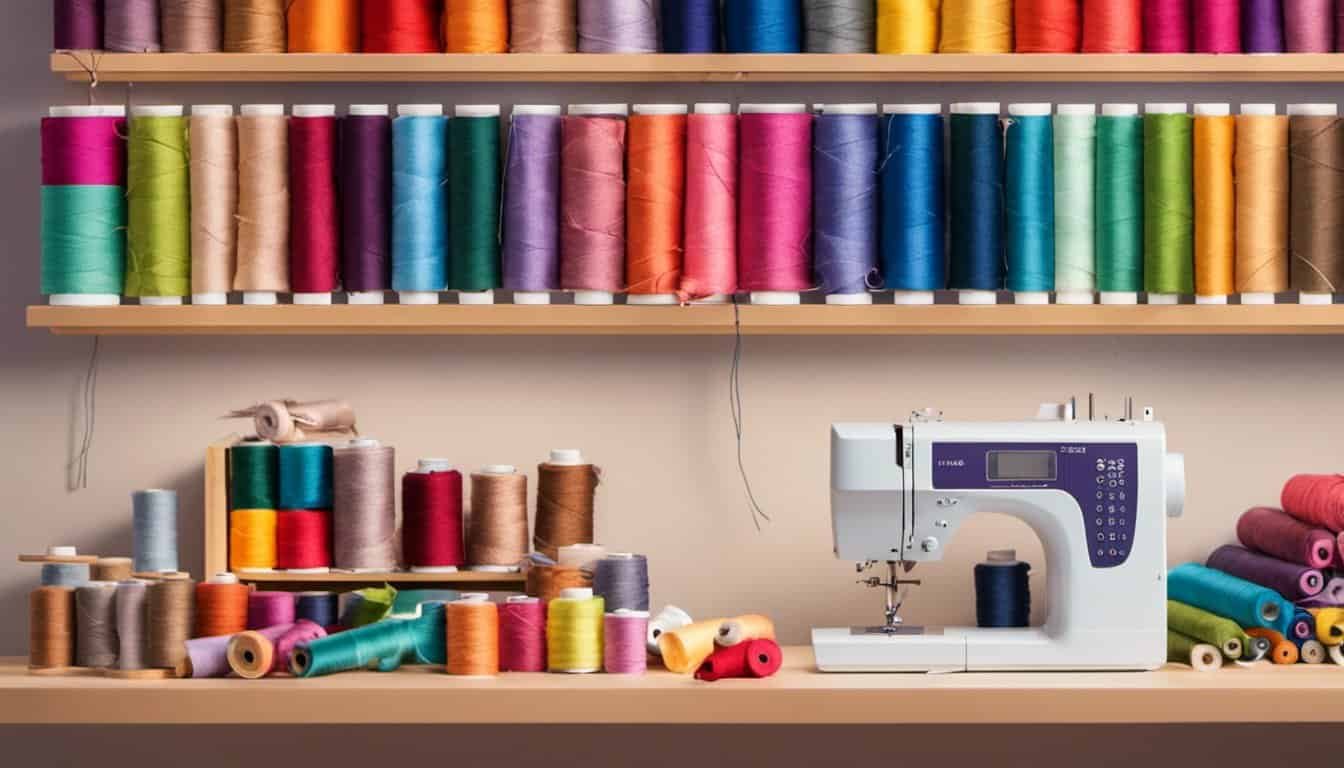
Speed Control
Speed control is another important feature to look for in a leather sewing machine. Sewing through leather requires a slower speed than sewing through other materials. Look for a machine that has adjustable speed control so that you can sew at the right speed for the thickness of the leather you are working with.
Built-In Stitches
While a straight stitch is the most common stitch used for sewing leather, having other stitches available can be useful for certain projects. Look for a machine that has a variety of built-in stitches, including zigzag and decorative stitches.
Needle Sizes
The needle size you use when sewing leather is important. A needle that is too small will break, and a needle that is too large will leave holes in the leather. Look for a machine that can handle a variety of needle sizes, including larger sizes for thicker leather.
Adjustable Stitch Length
Adjustable stitch length is another important feature to look for in a leather sewing machine. Being able to adjust the stitch length allows you to sew through different thicknesses of leather and create different effects.
Specialty Feet
Specialty feet can make sewing leather easier and more precise. Look for a machine that comes with a walking foot, a roller foot, and a Teflon foot. These feet will help you sew through thick leather, prevent the leather from sticking to the foot, and sew straight lines.
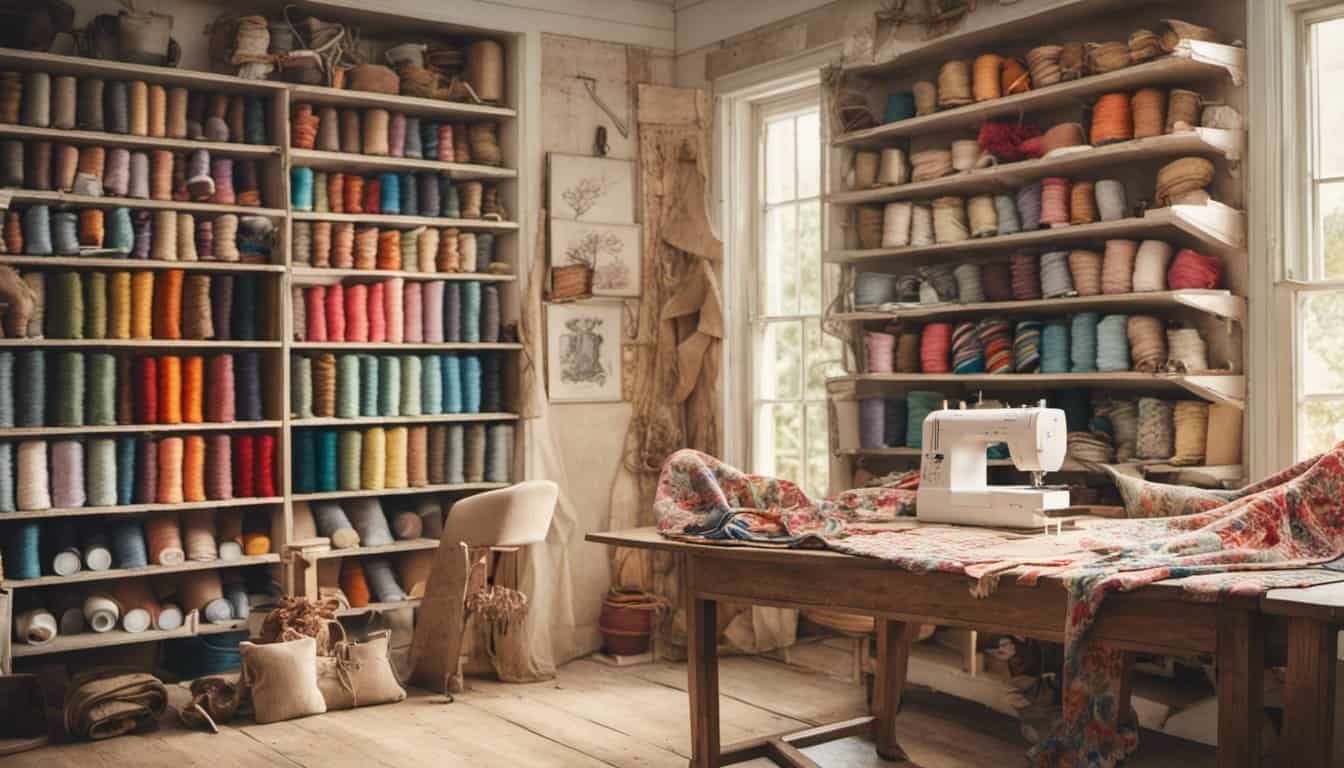
Hand Crank
A hand crank can be useful when sewing leather. It allows you to sew at a slower speed and gives you more control over the stitching. Look for a machine that comes with a hand crank or has the option to add one.
Knurled Presser Feet
Knurled presser feet are another useful feature to look for in a leather sewing machine. They provide extra grip on the leather, which helps prevent slipping and ensures that the leather stays in place while you sew.
Speed Reducer
A speed reducer can be useful when sewing leather. It allows you to slow down the machine even further than the speed control allows, which can be useful when sewing through thick or multiple layers of leather.
EZ Set™ Stitch Length Plate
An EZ Set™ stitch length plate can make adjusting the stitch length easier and more precise. Look for a machine that comes with this feature or has the option to add it.
Magnetic LED Light
A magnetic LED light can be useful when sewing leather. It provides extra light where you need it, and because it is magnetic, you can move it around to get the best angle.
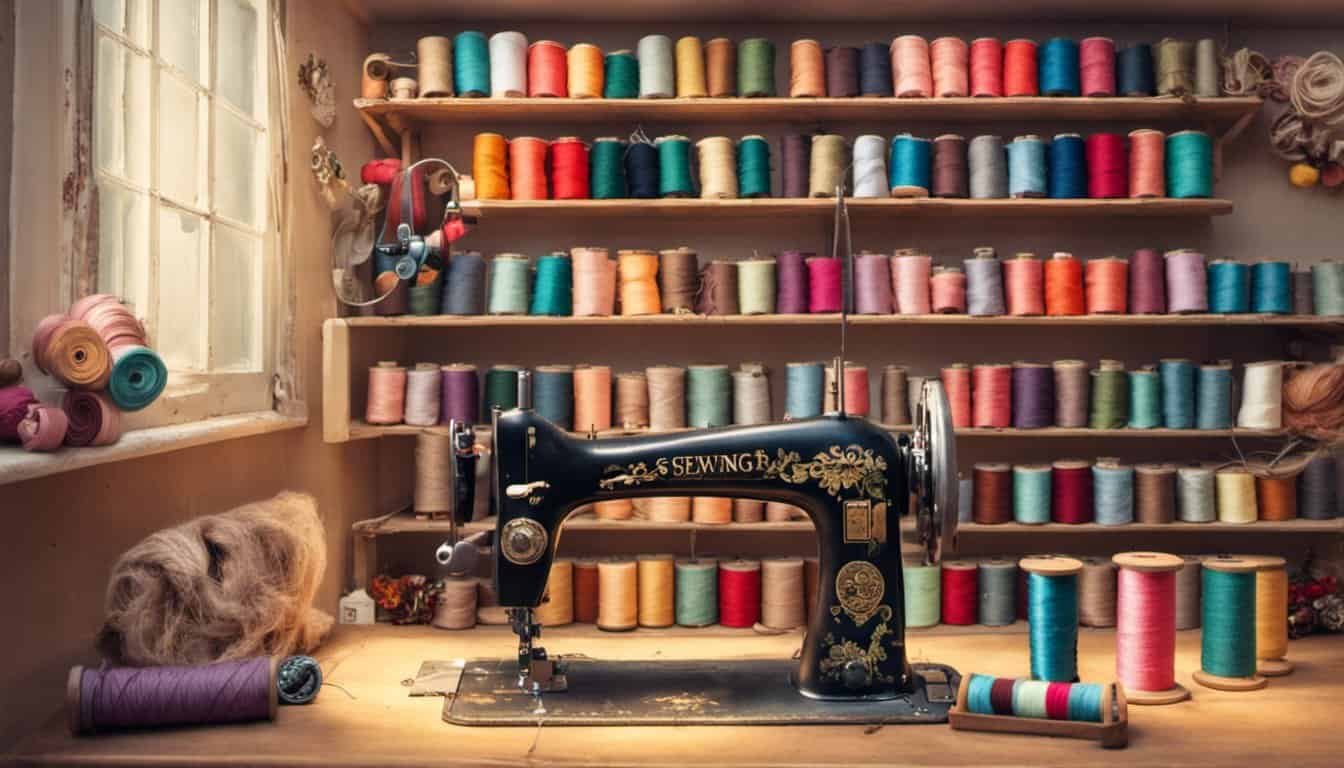
LCD Screen
An LCD screen can make adjusting the settings on your machine easier. Look for a machine that has an LCD screen that displays the stitch length, stitch width, and other settings.
Variable Speed Control
Variable speed control allows you to adjust the speed of the machine smoothly and precisely. Look for a machine that has this feature so that you can sew at the right speed for the thickness of the leather you are working with.
Maintenance and Support
Maintaining your leather sewing machine is essential to ensure that it lasts longer and functions properly. As a leather sewing machine owner, I recommend performing routine maintenance checks to keep the machine in good condition. Here are some tips on how to maintain your leather sewing machine:
Clean the machine regularly: Dust and debris can accumulate on the machine, which can affect its performance. Use a soft cloth to wipe the machine regularly.
Oil the machine: Oiling the machine is critical to keep it running smoothly. Follow the manufacturer’s instructions on how to oil the machine. Over-oiling the machine can be just as bad as not oiling it at all.
Replace the needles: The needles can become dull or bent over time, which can affect the quality of the stitching. Replace the needles regularly to ensure that the machine is sewing correctly.
Check the tension: The tension on the machine can become loose or tight, which can affect the stitching quality. Check the tension regularly and adjust it if necessary.
If you experience any issues with your leather sewing machine, contact customer support. They can provide you with troubleshooting tips or guide you through the repair process. The customer support team can be reached via phone, email, or live chat.
Finally, it is essential to note that most leather sewing machines come with a five-year limited warranty. The warranty covers any defects in the machine’s materials or workmanship. If you experience any issues with the machine during the warranty period, contact customer support to initiate a warranty claim.

By following these maintenance tips and utilizing the customer support team, you can ensure that your leather sewing machine lasts longer and functions correctly.
Common Mistakes and How to Avoid Them
As a leatherworker, I have made my fair share of mistakes when sewing leather. However, with experience and the right techniques, I have been able to avoid these mistakes. In this section, I will share some common mistakes that DIY leatherworkers make and how to avoid them.
Using the Wrong Needle
One of the most common mistakes that beginners make is using the wrong needle. A regular sewing needle will not be strong enough to sew through leather, so you’ll need a heavy-duty needle. Using the wrong needle can cause the thread to break or the needle to bend, resulting in uneven stitching. Make sure to use a needle that is specifically designed for leather sewing.
Skipping the Test Run
Another mistake that beginners make is skipping the test run. Before starting a project, it’s important to test your machine settings and stitch length on a scrap piece of leather. This will help you adjust the tension and stitch length to ensure that your stitches are strong and even. Skipping this step can result in uneven stitching or even damage to your machine.
Not Using the Right Thread
Using the wrong thread can also cause problems when sewing leather. Make sure to use a heavy-duty thread that is designed for leather sewing. Using a lightweight thread can cause the thread to break or the stitching to come undone.

Not Using a Leather Guide
When sewing leather, it’s important to sew straight and accurate seams. To help you achieve this, you can use a leather guide or seam tape that helps you mark the seam allowance on the leather. This will help you sew straight and accurate seams, resulting in a more professional-looking finished product.
Working Too Quickly
Working too quickly when sewing leather can cause mistakes. Leather is a thick and durable material that requires a slower sewing speed. Working slowly and carefully is essential when sewing leather. This will help you avoid mistakes and ensure that your stitches are strong and even.
By avoiding these common mistakes, you can achieve better results when sewing leather. Remember to take your time, use the right tools and materials, and always test your machine settings before starting a project.
Applications of Leather Sewing Machines
As a leatherworker, I can attest to the fact that a leather sewing machine is a game-changer when it comes to producing high-quality leather products. Here are some of the applications of leather sewing machines that I have found to be the most useful:
Wallets and Bags
Leather wallets and bags are some of the most popular leather products, and for good reason – they are durable, stylish, and functional. A leather sewing machine makes it easy to create clean and precise stitches on thick leather, which is essential for creating wallets and bags that will stand up to daily use.

Belts
Belts are another popular leather product that can be easily made with a leather sewing machine. Whether you are making a simple leather belt or a more complex design with multiple layers and stitching patterns, a leather sewing machine can help you achieve professional-looking results.
Canvas and Denim
While leather is the primary material that leather sewing machines are used for, they can also be used to sew other materials such as canvas and denim. This makes them a versatile tool for a variety of projects, from repairing canvas tents to creating denim jackets.
In conclusion, a leather sewing machine is an essential tool for anyone who wants to create high-quality leather products. Whether you are a professional leatherworker or a hobbyist, a leather sewing machine can help you achieve clean and precise stitches on thick leather, as well as other materials such as canvas and denim.
Conclusion
In conclusion, after researching and testing various leather sewing machines, I can confidently say that investing in a good quality machine is essential for an enjoyable and successful sewing experience.
A leather sewing machine is specifically designed to handle the unique properties of leather, such as its thickness and toughness. Therefore, it is important to choose a machine that is powerful enough to handle the task at hand.
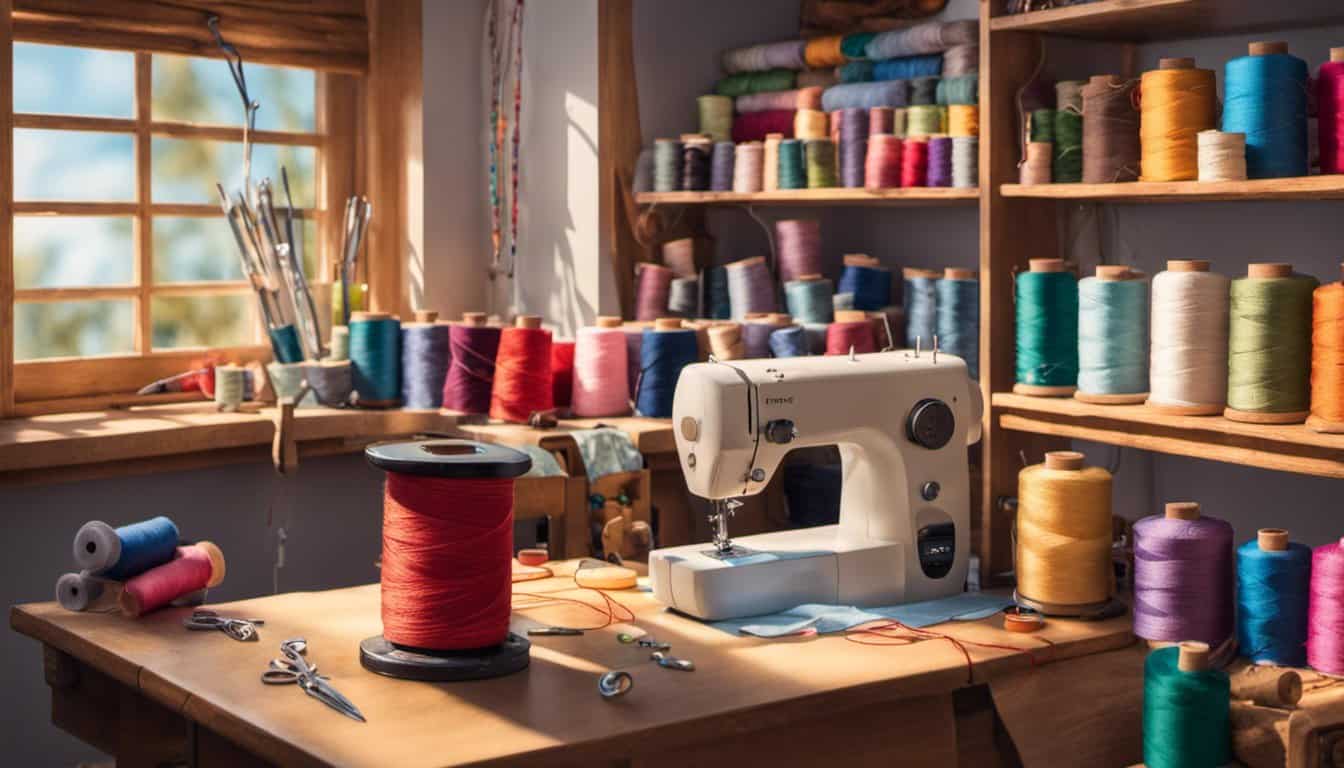
While some domestic sewing machines may be able to handle thin leather, a heavy-duty machine is necessary for thicker and more challenging projects. The Consew 206RB-1 and Janome HD3000 are both excellent options for those looking for a reliable and versatile machine.
Additionally, it is important to consider the extra features that each machine offers, such as adjustable presser feet and stitch length. These features can make a significant difference in the quality of your finished product.
Overall, investing in a good quality leather sewing machine can make all the difference in your sewing experience. It will allow you to work with a wider range of leather types and thicknesses, and produce high-quality finished products.
Frequently Asked Questions
Where can I find a used leather sewing machine for sale?
If you’re looking for a used leather sewing machine, you can check out local classified ads, online marketplaces like eBay or Craigslist, or even sewing machine repair shops. Just make sure to inspect the machine thoroughly before purchasing to ensure it’s in good working condition.
What are some affordable options for a leather sewing machine?
If you’re on a budget, there are several affordable options for a leather sewing machine. Some good choices include the Singer Heavy Duty 4423, Brother ST371HD, and Janome HD1000. These machines are all under $300 and offer great value for their price.

Which leather sewing machine is best for beginners?
For beginners, the Singer Heavy Duty 4411 is a great choice. It’s easy to use and has a simple design, making it perfect for those who are just starting out. It also has a powerful motor and can handle heavy fabrics like leather with ease.
What are the top-rated leather sewing machines on Amazon?
Some of the top-rated leather sewing machines on Amazon include the Singer Heavy Duty 4452, Janome HD3000, and Brother ST150HDH. These machines have received high ratings from customers and are known for their durability and performance.
Can a Singer sewing machine handle sewing thick leather?
Yes, Singer sewing machines are known for their ability to handle thick fabrics like leather. However, it’s important to use the correct needle size and thread tension to avoid damaging the machine or the fabric.
What tension should I use on my sewing machine for leather projects?
When sewing leather, it’s important to use a higher tension setting than you would for lighter fabrics. This will help ensure that the stitches are tight and secure. It’s also important to use a heavy-duty needle and thread designed specifically for leather.

